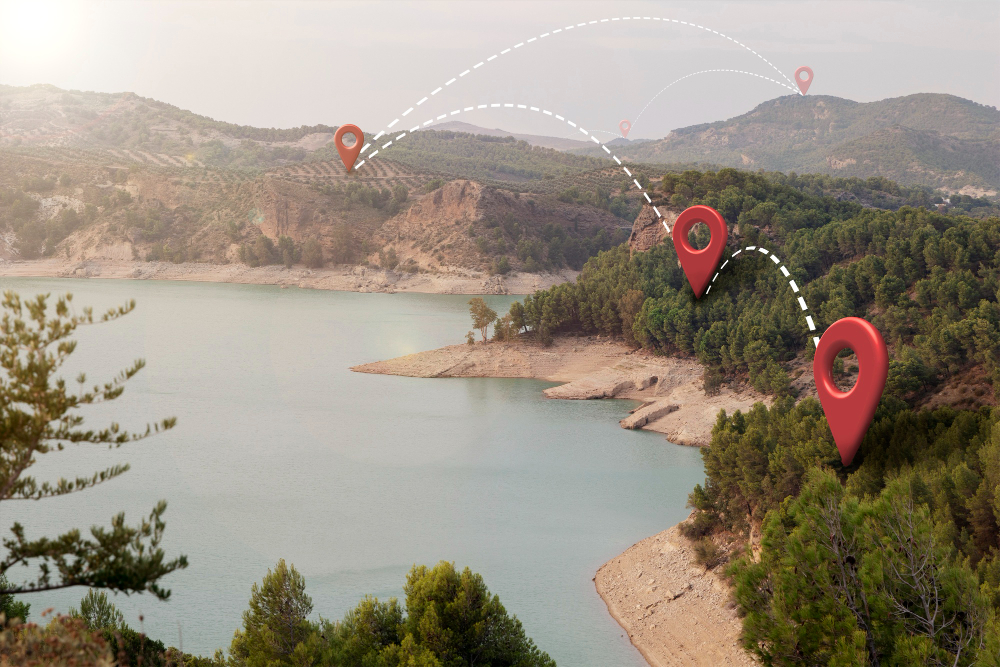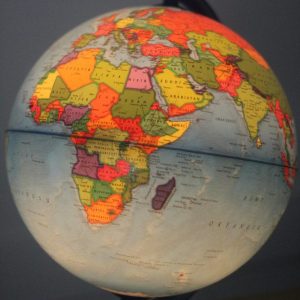In today’s data driven world, the fusion of Geographic Information Systems (GIS) and Artificial Intelligence (AI) has created a revolutionary field known as GeoAI (Geospatial Artificial Intelligence). But what is GeoAI exactly? It represents the cutting edge convergence of spatial science and intelligent algorithms, transforming how we analyze, interpret, and leverage location based data.
GeoAI goes beyond traditional mapping and spatial analysis by incorporating advanced machine learning, deep learning, computer vision, and natural language processing (NLP). These AI powered techniques enable systems to automatically detect patterns, predict trends, and extract meaningful insights from massive geospatial datasets tasks that would be impossible or extremely time-consuming using conventional GIS methods alone.
The impact of GeoAI is already being felt across industries. Urban planners use it to model smart city growth and optimize infrastructure. Environmental scientists apply it to monitor climate change and predict natural disasters. Retail and logistics companies leverage it for hyper accurate location analytics, while governments employ it for real-time crisis response and public safety enhancements. Even healthcare providers utilize GeoAI to track disease spread and optimize resource allocation.
As organizations increasingly recognize the value of location intelligence, GeoAI is emerging as a critical differentiator turning raw geospatial data into actionable, predictive, and automated decision making tools. This powerful combination is not just improving existing processes; it’s creating entirely new possibilities for how we understand and interact with spatial information.
In this exploration of what is GeoAI, the GeoInfoSpot blog would break down its core technologies, real world applications, and the competitive advantages it offers to forward thinking businesses and institutions. Whether you’re a GIS professional, data scientist, or business leader, understanding GeoAI is essential for harnessing the next generation of spatial analytics.
The age of intelligent geospatial analysis has arrived and it’s reshaping our world in profound ways. Let’s dive deeper into what GeoAI is and how it’s revolutionizing location-based decision-making across the globe.
What is GeoAI?
GeoAI (Geospatial Artificial Intelligence) refers to the application of AI and machine learning techniques to geospatial data. It enhances traditional GIS by automating data analysis, improving predictive modeling, and extracting deeper insights from spatial datasets. GeoAI leverages advanced algorithms to process satellite imagery, drone data, LiDAR, and other geospatial inputs, enabling smarter decision-making in real time.
The core of GeoAI lies in its ability to recognize patterns, predict trends, and classify objects within spatial datasets. For example, it can be used for urban planning, disaster management, environmental monitoring, and precision agriculture. By integrating AI with GIS, organizations can move beyond static maps and into dynamic, intelligent spatial analysis.
Key Applications of GeoAI
1. Urban Planning and Smart Cities
Cities around the world are adopting GeoAI to optimize infrastructure, traffic management, and public services. Machine learning models analyze traffic patterns, predict congestion, and suggest optimal routes. AI powered GIS also helps in land use planning by identifying suitable locations for housing, parks, and commercial zones based on historical and real time data.
2. Environmental Monitoring and Climate Change
GeoAI plays a crucial role in tracking deforestation, monitoring wildlife habitats, and assessing the impact of climate change. By analyzing satellite imagery, AI models can detect illegal logging activities, measure glacier retreat, and predict natural disasters such as floods and wildfires. Governments and environmental agencies use these insights to implement proactive conservation strategies.
3. Precision Agriculture
Farmers are leveraging GeoAI to enhance crop yields and reduce resource waste. Drones equipped with multispectral cameras capture field data, while AI algorithms analyze soil health, moisture levels, and pest infestations. This data driven approach enables precision farming, where resources like water, fertilizers, and pesticides are applied only where needed, improving sustainability.
4. Disaster Response and Risk Assessment
During emergencies, GeoAI helps first responders by analyzing real time satellite and drone imagery to assess damage, identify affected areas, and plan rescue operations. Predictive models also evaluate risks for earthquakes, hurricanes, and landslides, allowing authorities to take preventive measures and allocate resources efficiently.
5. Business Intelligence and Location Analytics
Retail chains, logistics companies, and real estate firms use GeoAI to optimize operations. Machine learning models analyze foot traffic, demographic trends, and competitor locations to determine the best sites for new stores. Logistics companies employ route optimization algorithms to reduce fuel consumption and delivery times.
Challenges and Future of GeoAI
Despite its potential, GeoAI faces several challenges. High quality geospatial data is often scarce or expensive, and integrating AI with legacy GIS systems can be complex. Additionally, ethical concerns such as data privacy and algorithmic bias must be addressed to ensure fair and transparent decision-making.
The future of GeoAI looks promising, with advancements in deep learning, edge computing, and the Internet of Things (IoT). Autonomous vehicles, augmented reality navigation, and real time geospatial analytics will further expand its applications. As AI models become more sophisticated, GeoAI will continue to transform industries by making spatial intelligence more accessible and actionable.
Benefits of GeoAI Adoption for GIS Companies
Companies specializing in GIS can gain a competitive edge by adopting GeoAI. Here are some key advantages:
1. Enhanced Data Processing and Automation
Traditional GIS workflows often require manual intervention, which is time consuming. GeoAI automates tasks such as feature extraction, image classification, and anomaly detection, significantly reducing processing time while improving accuracy.
2. Improved Predictive Analytics
GeoAI enables predictive modeling for various applications, such as forecasting natural disasters, urban expansion, or retail site selection. Businesses can make data driven decisions by analyzing historical trends and real time data.
3. Real Time Spatial Analysis
With AI powered GIS, companies can process streaming geospatial data from IoT devices, drones, and sensors. This capability is crucial for applications like traffic management, precision agriculture, and emergency response.
4. Cost and Resource Efficiency
By automating repetitive tasks, GeoAI reduces labor costs and minimizes human errors. Organizations can allocate resources more effectively, focusing on strategic initiatives rather than manual data handling.
5. Scalability for Big Geospatial Data
As geospatial datasets grow in volume and complexity, traditional GIS tools struggle to keep up. GeoAI provides scalable solutions to analyze massive datasets efficiently, making it ideal for industries like logistics, utilities, and environmental monitoring.
6. Better Decision Making with Explainable AI
Modern GeoAI models incorporate explainability, helping users understand how decisions are made. This transparency is essential for sectors like urban planning and public policy, where accountability is critical.
FAQs About GeoAI
1. What is the difference between GIS and GeoAI?
GIS focuses on capturing, storing, and visualizing spatial data, while GeoAI enhances GIS by using AI to analyze and predict patterns in that data automatically.
2. Which industries benefit the most from GeoAI?
Industries such as urban planning, agriculture, disaster management, transportation, and retail benefit significantly from GeoAI due to its predictive and automation capabilities.
3. Does GeoAI replace traditional GIS?
No, GeoAI complements GIS by adding advanced analytical capabilities. Traditional GIS remains essential for data management and visualization, while GeoAI enhances its analytical power.
4. What are the challenges of implementing GeoAI?
Key challenges include data quality issues, high computational requirements, and the need for specialized expertise in both GIS and AI.
5. How can businesses start using GeoAI?
Businesses can begin by integrating AI powered plugins into existing GIS software (e.g., ArcGIS with Python ML libraries) or partnering with GeoAI solution providers for customized applications.
GeoAI represents the next evolution of GIS, merging spatial science with cutting-edge AI to unlock new possibilities. For GIS companies, adopting GeoAI means faster insights, cost savings, and a competitive advantage in an increasingly data-driven world. As technology advances, GeoAI will continue to reshape industries, making geospatial intelligence more accessible, accurate, and actionable than ever before.



